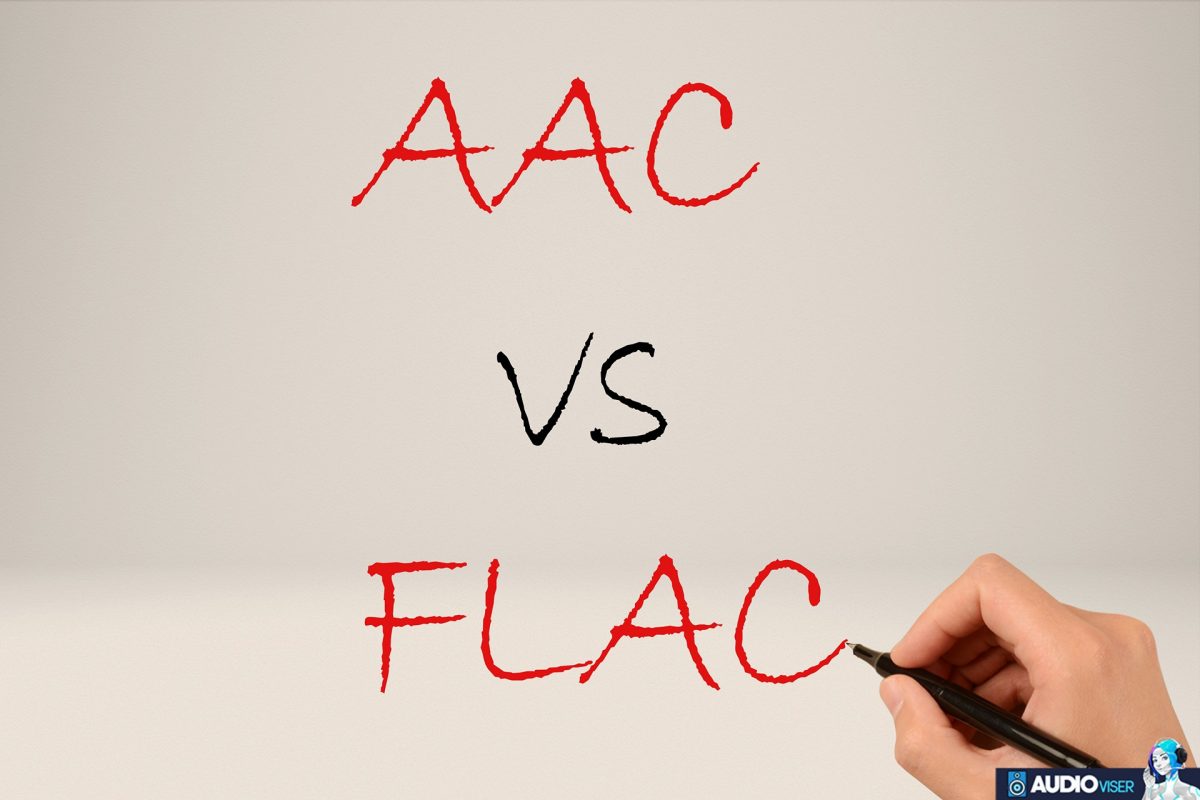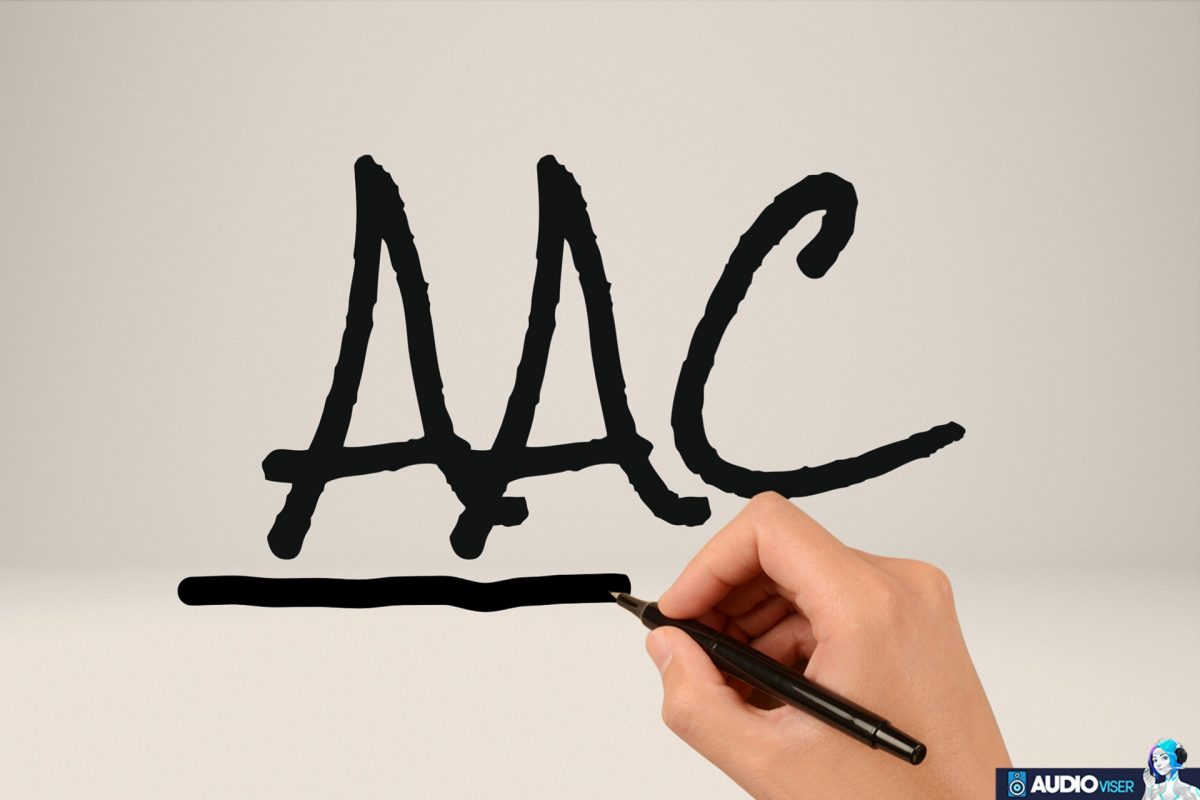
A fresh article, a new day, and undoubtedly some new information. Given that the issue I’ll be discussing is so fascinating and worthwhile to discuss, I have a feeling this article will be a popular one. This time, I’ll probably make the introduction a little shorter than normal because there are so many important elements that need to be covered.
First of all, when I first considered writing this article, I discovered that it would be harder than other articles because there are many concepts that the majority of you may not be familiar with. However, this is not a problem at all because I will start with the most fundamental concepts to make them as simple as possible for you to understand.
Given that this article is about AAC and FLAC, the first thing we need to learn in-depth about is what audio coding and audio codecs are. It may sound a little difficult, but it’s not. As you will grasp what these two truly imply and for what reason we use them, I will try to do my best to help you comprehend the major purposes of AAC and FLAC. Then, I will explain if there are many differences between them so that we can do an easy comparison.
Since I have a lot to tell you and all of you who read my articles know well that I love talking a little bit longer than required and revealing every detail, this will be a new challenge for me. I can’t wait to get started on the major section of this article. So let’s get started.
AAC – Advanced Audio Coding

This section of the article will tell you all there is to know about AAC. I chose to write it in a question-and-answer format since it helps people grasp things more simply. I’ll begin by defining AAC before moving on to a discussion of its primary characteristics and advantages.
What Is AAC And Why Is It Used?
The Advanced Audio Coding (AAC) standard for lossy digital audio compression initially debuted in 1997 as an MP3 replacement. AAC and MP3 both utilize lossy compression, however, AAC has the potential to sound superior to MP3. AAC is a method for digital audio file compression and encoding that is used for audio files with medium-to-high bit rates. To reduce the amount of data necessary to transmit high-quality digital audio, it uses two main coding techniques. Redundancies in the coded audio signal are eliminated, and extraneous signals are removed.
What Are The Benefits of AAC?
AAC can sample frequencies from 8Hz to 96kHz and up to 48 channels, and it is also better than MP3 in compressing music that comprises streams of complicated pulses and square waves. Major corporations including Sony Corp., Dolby Laboratories, and Nokia Corp. use it. Tens of thousands of songs can now fit into modern portable media player devices thanks to AAC, and they do so with a sound that is naturally crystal clear. You can store more music on your device since AAC has reduced encoded file sizes. AAC encoded files often tend to be much less than MP3 files. Additionally, AAC has a greater high-frequency response, allowing it to handle audio frequencies up to 16 kHz. VBR is equally well defined when compared to MP3. One of the finest features of AAC is its broad device interoperability, which means that AAC implementations may typically work with one another as long as the AAC standards version is the same.
What Are The Disadvantages of AAC?
AAC has a lot of advantages, but it also has certain drawbacks. First, I’ll talk about how long encoding takes, and I’ll warn you that if there are many files, encoding will take a long time. The high CPU usage while encoding is another drawback of AAC, which could be a little annoying. The fact that AAC is still not a fully lossless compression method, which means that it discards certain audio components from the original recording that it considers unnecessary, is perhaps its most frustrating drawback.
FLAC – Free Lossless Audio Codec

What Is FLAC And Why Is It Used?
This lossless compression format, or FLAC, produces respectable little audio files after compression without compromising the sound quality. It is extremely similar to an MP3 file, however, unlike MP3, it is compressed without sacrificing any of the original audio data or quality. FLAC is still a widely accepted format on the most well-liked systems and cuts the size of digital audio by about 60%. Compared to other formats, FLAC may be streamed and decoded more quickly. From 0 to 8, there are nine distinct FLAC compression settings available. The compression is also higher at higher altitudes.
What Are The Benefits of FLAC?
FLAC has numerous advantages when it comes to audio. The major advantage of FLAC is the improvement in sound quality, which allows you to hear the file in its most natural state and enhances your listening experience. The biggest advantage of FLAC is that it may be up to 24-bit, which is far superior and is not restricted to 16-bit CD quality. Another benefit of FLAC is that the files are often half as large, which is a very significant instance. Therefore, FLAC is the greatest format for sound quality if we take into account that it is a lossless audio file format.
What Are The Disadvantages of FLAC?
The biggest drawback of FLAC is that the majority of hardware does not come with native support. However, there is some good news in this regard as well, as several smartphones and operating systems have begun to support FLAC. Its lack of support for any form of digital-rights management capacity might be the cause of this. By design, FLAC files are free of software license restrictions, which severely limits their utility. Since FLAC is better, I am at a loss for anything else to say that is a disadvantage.
Differences Between AAC And FLAC
This section of the post is the most important since I’ll compare AAC and FLAC and explain their differences. As I indicated above, AAC is an uncompressed audio file/lossy format, which means that it removes musical elements. In contrast, FLAC is lossless, which means that it preserves nearly all audio data after compression. So yeah somehow lossless files are the superior audio file formats compared to uncompressed audio files rivals.
The sound quality is the other distinction between them. AAC won’t sound as well as FLAC because it is a lossy format and will lose some audio information.
FLAC is regarded as the preferred format for downloading and storing hi-res albums whereas AAC is typically used with Apple devices and applications such as iTunes downloads, Apple Music, and so forth.
The file sizes are the final distinction that I will make. Typically, FLAC files are three to five times bigger than AAC ones.
Final Words
As I wrote a lot, this is where I will put an end to my article. I tried my best to make it simple for you to grasp these two formats so that you could see what they have to offer and how they differ from one another. I completed my comparison as accurately as I could, and I hope that this post will serve as a useful reference for everyone reading it.
All I have to say is this. Stay tuned guys, I have many more articles for you.
Further Reading
I have for you some of the best audio interfaces about different stuff, such as the best audio interfaces for Shure SM7B, best audio interfaces for FL studio, best audio interfaces for GarageBand, and the best audio interfaces for voice over.
Sound Technician
I’m a sound technician, ensuring that your events and shows are heard loud and clear. Crafting audio broadcasts, studio recordings, and live mixes with finesse to provide the best quality sound experience.





